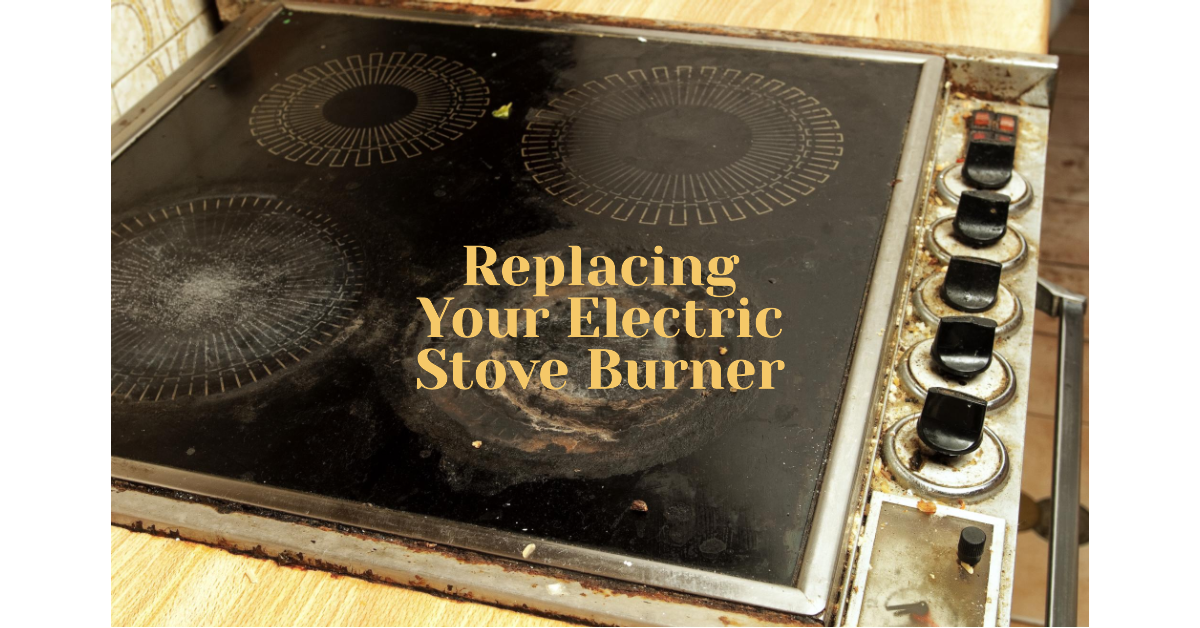Is your electric stove burner causing you frustration with its uneven heating or lack of functionality? It might be time for a replacement. Don’t worry, though! With the right guidance, you can confidently tackle this task on your own.
In this comprehensive blog post, we’ll walk you through a step-by-step tutorial on how to replace your electric stove burner safely and efficiently.
By the end of this guide, you’ll have the know-how to DIY your stove burner replacement, saving time and money on professional service calls.
Disclaimer: Before proceeding with any DIY repairs, always ensure to disconnect the power source and consult your stove’s user manual for specific instructions and safety precautions. If you’re uncomfortable with the process, it’s best to seek professional assistance.
A Comprehensive Guide to Electric Stove Burner Replacement
Let’s replace your electric stove burner by following the ten simple steps below:
a. Identify the Problem:
The first step in the process is to identify the issue with your stove burner. Electric stove burners can face various problems, including not heating at all, heating unevenly, or producing sparks. Understanding the problem will help you determine whether a replacement is necessary.
If the burner doesn’t heat at all, there might be an issue with the heating element or the wiring. For uneven heating, the burner’s coil might be damaged or worn out. In the case of sparks, there could be a short circuit in the wiring.
b. Gather the Necessary Tools:
Before you get started, gather all the necessary tools for the job. You’ll typically need a flathead or Phillips screwdriver, pliers, and a replacement stove burner that matches the make and model of your current one. It’s essential to use the right replacement part to ensure proper compatibility and functionality.
You can find compatible replacement burners at appliance stores or online retailers. If you’re unsure about the right part, you can refer to your stove’s user manual or contact the manufacturer for guidance.
c. Turn Off the Power:
Safety comes first! Before you begin any repair work, unplug the stove from the power outlet or turn off the circuit breaker that supplies power to the stove. This step is critical to avoid any potential electrical accidents while you work on the appliance.
d. Access the Burner:
Most electric stoves have burners that are easily accessible by lifting the burner assembly. To locate the burner, open the stove’s top cover or lift the cooktop surface, depending on your stove’s design.
Gently lift the burner assembly, but be cautious not to damage any wires connected to it. Take a moment to inspect the area for any accumulated debris or dirt that may be affecting the burner’s performance. Cleaning the area before replacing the burner can improve its overall function.
e. Disconnect the Old Burner:
Once you’ve accessed the burner assembly, locate the connection point between the burner and the stove. The burner is usually held in place by two prongs or screws that secure it to the stove.
Use the appropriate tools, such as pliers or a screwdriver, to disconnect the old burner carefully. Be gentle during this process to avoid damaging the prongs or wires connected to the burner.
f. Examine the Wiring:
With the old burner removed, take a moment to inspect the wiring connected to the burner. Look for any signs of wear, damage, or loose connections. If you notice any issues, it’s a good idea to replace the wiring along with the burner to ensure optimal performance and safety.
g. Connect the New Burner:
Now that you’ve removed the old burner and checked the wiring, it’s time to install the new burner. Carefully align the new burner’s prongs or screws with the corresponding slots on the stove.
Make sure the connections are secure and snug, but avoid over-tightening, as this can lead to damage. Ensure that the new burner fits correctly into its designated spot on the stove.
h. Reassemble the Burner Assembly:
With the new burner securely in place, reassemble the burner assembly. Lower the burner assembly back into its original position on the stove. Ensure that it fits properly and that there are no loose components.
i. Test the Burner:
Now that the new burner is installed, it’s time to test its functionality. Plug the stove back into the power outlet or switch on the circuit breaker to restore power to the appliance.
Turn on the burner and observe its performance. Check if it heats up evenly and consistently. Allow the burner to heat for a few minutes and feel the heat distribution with your hand to ensure it’s functioning as expected.
j. Final Checks and Safety Precautions:
Before considering the job complete, double-check all connections and wiring to ensure everything is in place and properly secured. Also, test the neighboring burners to ensure they’re functioning correctly as well.
Finally, remember to turn off the stove and unplug it from the power outlet once you’ve completed the test. This step is crucial for safety, especially if you plan to leave the stove unattended.
5 Tips for Electric Stove Burner Replacement
1. Verify Compatibility:
Before purchasing a replacement electric stove burner, ensure that it is compatible with your stove’s make and model. Stove burners come in various sizes and configurations, so it’s essential to match the replacement with the original burner. Refer to your stove’s user manual or consult the manufacturer’s website to find the correct part number or compatible alternatives.
2. Inspect Wiring and Connections:
When replacing the stove burner, take the opportunity to inspect the wiring and connections in the burner assembly. Look for any signs of wear, fraying, or damage. If you notice any issues, replace the wiring along with the burner to prevent future problems. Ensure all connections are secure, as loose connections can lead to poor performance or even electrical hazards.
3. Clean the Area Thoroughly:
Before installing the new burner, clean the area where the burner sits. Over time, dirt, grease, and food debris can accumulate around the burner, affecting its performance. Use a soft cloth or a brush to remove any debris. This simple step can improve the new burner’s efficiency and prevent future issues.
4. Test Adjacent Burners:
While replacing a single burner, it’s a good idea to test the adjacent burners as well. Turn on the neighboring burners and check for consistent heating. If you notice any irregularities, it might indicate underlying issues that need attention. Identifying and addressing potential problems early can save you from additional repairs in the future.
5. Regular Maintenance:
To extend the life of your electric stove burners, incorporate regular maintenance into your kitchen routine. Keep the burner area clean and free from spills, as these can lead to corrosion and affect heating efficiency. Additionally, inspect the burners periodically for signs of wear and tear. If you notice any problems, address them promptly to prevent further damage.
Final Words
Replacing an electric stove burner doesn’t have to be a daunting task, especially with the right knowledge and preparation. By following our step-by-step tutorial and implementing these five tips, you can ensure a smooth and successful burner replacement process. Remember to prioritize safety throughout the process and seek professional assistance if you encounter any challenges or are uncomfortable with DIY repairs.
By taking care of your electric stove burners and addressing issues promptly, you can enjoy reliable and efficient cooking for years to come. DIY replacement not only saves you time and money but also empowers you to maintain your appliances and handle minor repairs confidently. Happy cooking!

